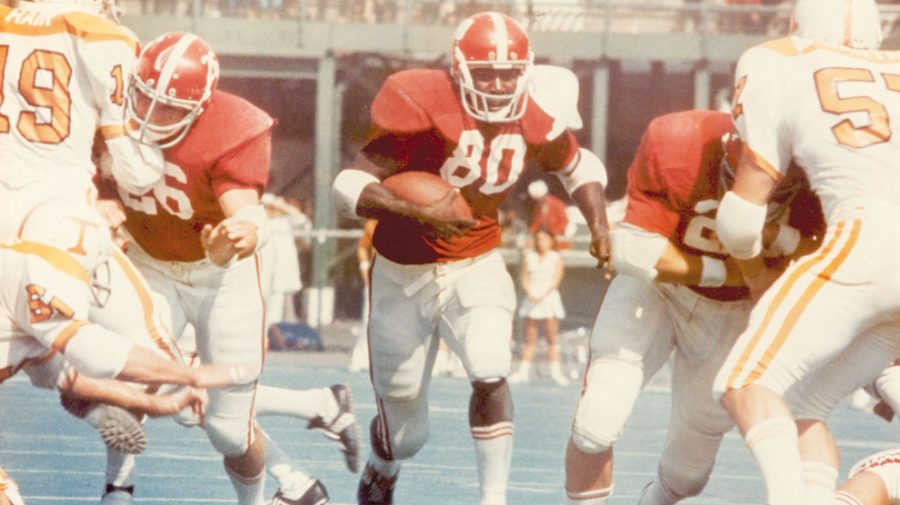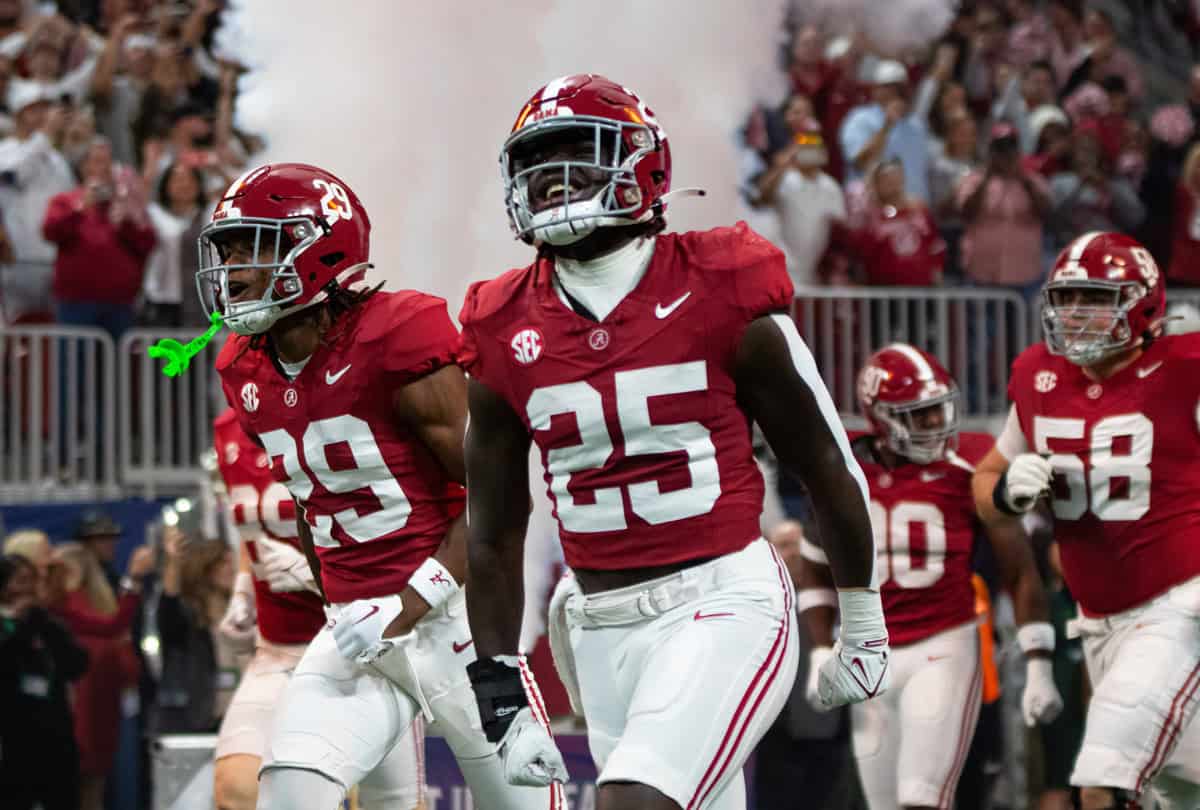It was a trying time for the state of Alabama. In 1963, Gov. George Wallace brought national media attention to the University as he barred the entrance of Foster Auditorium, refusing to allow two black students to enroll.
Soon after, some felt it was time for a change.
In 1969 that change came, as the Crimson Tide football team, a traditional powerhouse with numerous national championships and All-Americans, reached another milestone in its storied history. Alabama signed Wilbur Jackson, its first black scholarship player, and in 1970 fielded John Mitchell, who became the first black player to start a game for the Tide.
“All I could think about was Foster Auditorium,” Jackson said of when Alabama recruited him. “[Wallace] was trying to stop any blacks. When you look at it like that, it was a little surprising… [But] gosh, it felt pretty good.”
For Bill Oliver, an assistant coach under famed coach Paul “Bear” Bryant, the signing of Jackson and Mitchell was a sign that society in the South was changing.
“Somebody’s gotta start somewhere,” Oliver said. “The biggest thing is, the society changed. There were more blacks available [for recruitment]. It was a process that took time. It was a culture that needed to develop.”
Former Alabama assistant Pat Dye said, “I think it was them just having to be the first ones. No transition, they walked out there and were football players the first day.”
Still, Jackson was not the first black scholarship athlete ever at Alabama. It was Wendell Hudson, who signed with Alabama in the same year and went on to have an excellent career playing for the basketball team. C.M. Newton, the head basketball coach at the time who recruited Hudson, said his recruitment of Hudson, more than anything, was what persuaded Bryant to start recruiting black players.
“I think it had an influence, because Wendell [Hudson] came in and just tore down all the stereotypes,” Newton said. “He was a good student, just a tremendous player, and an all-around good person. Had Wendell not succeeded, I don’t know if Bryant would have gone and got Wilbur [Jackson] and John [Mitchell].”
Many people, however, attribute the desegregation of Alabama football to the 1970 game against the Southern California Trojans. In that game (played in Alabama), a black fullback named Sam Cunningham ran for 135 yards and two touchdowns en route to a 42-21 blowout against an all-white Alabama.
Jackson, who was already on the team, didn’t play because freshmen at the time weren’t eligible. Still, many think Bryant purposefully scheduled that game, knowing Cunningham would perform well against them, to demonstrate Alabama needed more black players.
However, many who knew Bryant said this wasn’t true.
“He scheduled them because he and their football coach were very good friends,” Newton said. “I think that has been a myth. That whole USC thing has been mythologized. Knowing Coach Bryant, they were very good friends. I don’t think it was scheduled for Sam Cunningham.”
Whether the myth is true or not, Cunningham’s performance opened many eyes in the South to the talent and worth of black players.
Newton not only attributed the integration of the football team to the recruitment of his own player, Hudson, but also to a shift in Southern high schools that started integrating their programs.
“I think more importantly was the pool of talent that became more available through the state,” Newton said. “The timing came about 1968 when Alabama and Georgia integrated their high school programs. And what that did, it took the black players and mixed them with predominantly white schools. And that had more of an impact.
“I think ultimately when [Bryant] saw many of the best high school players in our own state were going to be black, Bryant made the decision – he didn’t care if they were polka-dotted, or whatever.”
Still, once Jackson and Mitchell were on campus, there was a possibility of an incident arising because of their race. Jackson said he was a little apprehensive that it might happen. However, he said during his and Mitchell’s time at the Capstone, no incidents arose.
“Everything was fine,” Jackson said. “I think coach Bryant had a real grasp of the program at the time when I got there. Bryant always talked about class. During the time I was there, everything went relatively smooth.”
Eventually, Mitchell and Jackson would establish themselves as dominant players for the Tide, resulting in the two being voted team captains on the team in ’72 and ’73, respectively.
“I think it’s the most amazing thing with the two of them,” Oliver said. “We talk about the way things are today, and you go back and relate that to those two guys. We didn’t have any black players. And the way they handled themselves with character, with self-discipline, getting better and better while they were there. That is mind boggling.”
Looking back now, Jackson said he had some amazing experiences playing for the Crimson Tide, and developed some friendships he still carries on today.
“The best part about it is the memories,” Jackson said. “When you look back at it now, you’d do it all over again. It was a good experience and helped mold me into the person I am today.”
Alabama, the state and university, had come a long way, from Wallace’s stand in the schoolhouse door to Jackson and Mitchell’s success on the football field. Still, for Dye, race was never a prevalent factor in football, for him, the players or Bryant himself.
“Football players – they don’t have no color,” Dye said. “They’re all red on the inside.”







